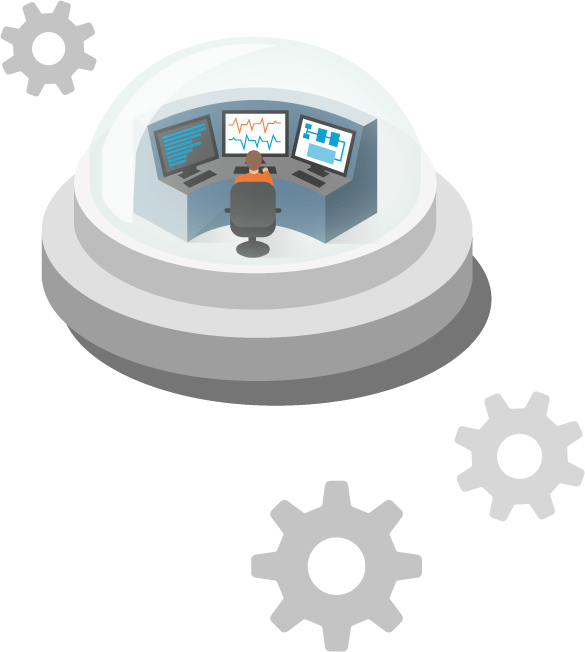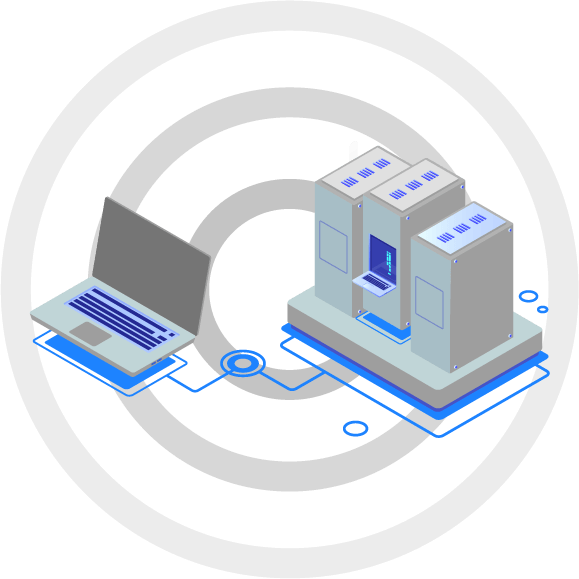
Stable, efficient power supply systems have become a prerequisite for servers and IoT equipment in today's data-driven world

A data-oriented society requires lots of power
Concepts that rely on the effective use of data, such as smart cities, smart homes, and Industry 4.0, are currently being promoted in a variety of areas to enrich society, business, and even daily life. This involves advanced IT systems such as AI (Artificial Intelligence) to analyze Big Data and IoT for collecting information on the movement and conditions around us.
All of these systems require electricity, and the more data being used and processed the more power is being consumed. And as the movement towards data utilization accelerates, data centers that perform cloud-based analysis of Big Data as well as IoT equipment that collects data from a variety of locations are beginning to face a number of issues related to the supply and use of power. Overcoming these problems requires high efficiency power systems capable of providing stable power. So it is no exaggeration to say that the future of a data-driven society depends on the evolution of power supply technology.

Stable power supply is essential for the smooth operation of data centers
According to information published by Fujitsu and NTT Facilities, the amount of power consumed by data centers is increasing by about 10% per year. This includes not only power for driving the microprocessors, etc., but also for operating cooling systems to ensure stable operation. In fact, as of 2017 the power consumed by data centers in the US has already reached the total power consumption of countries like Spain and Italy. This increase in power usage due to data utilization is problematic not only with regards to the global environment but also the profitability of cloud services. As a result, the power consumption of data centers has become an important issue.
Moving towards higher voltages to reduce power loss
Various initiatives are already underway to improve power efficiency by revamping power supply systems for servers and data storage.
Google released a specification in 2016 that raised the supply voltage for the server board racks from the conventional 12V to 48V. Since semiconductor chips operate with a low supply voltage of around 1V, the current of power supply systems for 12V rated boards can reach several hundred amperes. And because losses in a power distribution bus are proportional to the square of the supply current, power consumption cannot be overlooked. By raising the voltage 4 times while still being within safe operating limits, Google reasoned that losses can theoretically by reduced by a factor of 16.
As one of the largest data center operators in the world, Google develops its servers in-house. As a result, their development policy has a major impact on server manufacturers.
However, it is not only data centers that need to increase power supply voltages. High-output actuators and electronic devices that handle large loads are facing similar issues. Therefore, 48V power supply systems are expected to expand to FA/communication equipment and storage devices as well.

In the IoT sector, power supply presents a stumbling block for expansion
Meanwhile, completely different issues arise with IoT devices designed to collect data from consumers and workers in the field.
Home appliances including refrigerators and air conditions as well as industrial equipment such as machine tools can be made IoT compatible through the use of cables for both power supply and data transmission. On the other hand, there are many cases where the use of wired connections is impractical and inconvenient due to space limitations, such as in equipment that monitors the aging of road infrastructure or growth conditions of crops and farmland along with healthcare devices for recording vitals and biological information in daily life.
The evolution of wireless technology enables efficient data transmission in a variety of areas. However, for the power supply side, with rare exceptions there are few options for wireless thus far. The only choice in many cases is the use of batteries, which requires maintenance such as regular replacement or charging, limiting its usefulness.

Versatile technology that meets IoT requirements
Currently, significant progress has been made to free IoT devices from the shackles of power supply cables. Energy harvesting, which extracts and utilizes energy from the natural environment such as light, vibration, and temperature differences, along with technology for wirelessly transmitting power, have come into practical use.
However, at this time there are still very few power supply systems optimized to take advantage of these new methods. IoT devices come in a variety of forms and usage areas. The specifications for power obtained by energy harvesting are diverse, most in the low range from 1uW to 1W. At the same time, wireless power transfer specifications can also vary considerably depending on the environmental and usage conditions. So as standardization progresses, different technologies and ideas will be needed, unlike with conventional systems that handle stable power supply.
In addition, most IoT devices do not frequently collect and transmit data. This means that power consumption during operation has less of an impact on service life and ease-of-use than standby power consumption.
In conclusion, the continued expansion of IoT applications will largely depend on achieving technology that can supply power stably and efficiently to embedded electronic circuits while taking into account the unique characteristics of the IoT devices themselves.






